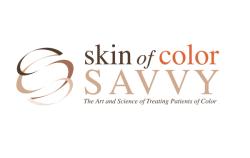
OR WAIT null SECS
Viaskin Milk Patch Returns Mixed Results in Phase 1/2 Trial
Viaskin milk patch shows promise in cow’s milk allergy, particularly in children aged 2-11 with 300 μg dose, though the other doses examined failed to prove significant benefit.
Results of the MILES trial suggest use of a daily epicutaneous immunotherapy with Viaskin milk could prove useful in the management of immunoglobulin E (IgE)-mediated cow’s milk allergy.
A phase 1/2, 2-part clinical trial, results indicated use of the 300 μg formulation of Viaskin milk was associated with statistically significant treatment response among the trial population, which had a mean age of 8 years.
“This phase 1/2 study aimed to identify the optimal target population and safe and effective dose of Viaskin milk to investigate in future studies in children with [cow’s milk allergy]. The Viaskin milk 300-μg 2- to 11-year-old subgroup had a significantly higher proportion of responders, defined by [cow’s milk allergy] desensitization proven with [double-blind, placebo-controlled food challenges]," wrote investigators.
Developed by DBV Technologies, the Viaskin milk patch is one of multiple epicutaneous immunotherapies from the company, with the Viaskin peanut patch receiving the most attention of these products. In 2023, the allergy and immunology community welcomed phase 3 data from the Viaskin peanut patch, but neither of these epicutaneous therapies have received regulatory approval from the US Food and Drug Administration.2,3
The current study of Viaskin milk was a 2-part trial. In part A of the trial, patients were randomized in a 2:1 ratio to 3 successive cohorts of 6 participants to receive Viaskin milk 150 μg, 300 μg, or 500 μg doses or placebo therapy for a 3-week period while being monitored by the data and safety monitoring board. After completion of part A additional participants were randomized in 1:1:1:1 ratio to Viaskin milk 150 μg, 300 μg, or 500 μg doses or placebo for 12 months.1
For inclusion in the trial, patients needed to be aged 2 to 17 years at screening with physician-diagnosed cow’s milk allergy and currently following a strict cow’s milk-free diet. Overall, 198 patients underwent randomized in the trial. This cohort had a mean age of 8 years and 62.6% were male. Of note, 53, 49, 49, and 47 participants were randomized to receive placebo, Viaskin milk at 150-μg, 300-μg, and 500-μg doses, respectively.1
The primary outcome of interest for the trial was defined as the proportion of treatment responders. For the purpose of analysis, treatment response was considered a 10-fold or more increase in the cumulative reactive dose of cow’s milk protein or a cumulative reactive dose of cow’s milk protein at 1444 mg or more at the month 12 double-blind, placebo-controlled food challenge.1
Upon analysis, results indicated the greatest responder rate was observed among those in the 300-μg dose with 49.0% (n=24 of 49) achieving a treatment response relative to just 30.2% (n=16 of 53) of the placebo group (Odds ratio [OR], 2.19; 95% Confidence interval [CI], 0.91-5.41; P=.09). In contrast, the response rates with the 150 μg and 500 μg doses were 36.7% and 36.2%, respectively. Further analysis revealed the benefit of Viaskin milk was most apparent in those aged 2-11 years, with a responder rate of 57.9% when using Viaskin milk at the 300-μg dose relative to 32.5% with placebo therapy among this cohort (P=.04).1
Investigators called attention to multiple limitations within their study to consider when interpreting results. These included, but were not limited to, a relatively small sample size, inability to explain certain findings, inclusion criteria limiting participation of those with asthma, and others.1
“Although evidence of an effect was observed for the 300-μg dose group, both by comparison with placebo and by change in CRD over the treatment period, there was no definitive difference in response observed in participants who received 150-μg or 500-μg doses of Viaskin milk.,” investigators wrote.1
References:
- Petroni D, Bégin P, Bird JA, et al. Varying Doses of Epicutaneous Immunotherapy With Viaskin Milk vs Placebo in Children With Cow’s Milk Allergy: A Randomized Clinical Trial. JAMA Pediatr. Published online February 26, 2024. doi:10.1001/jamapediatrics.2023.6630
- DBV Technologies. Our pipeline. DBV Technologies Pipeline. March 2, 2023. Accessed February 27, 2024. https://dbv-technologies.com/pipeline/.
- Greenhawt M, Sindher SB, Wang J, et al. Phase 3 Trial of Epicutaneous Immunotherapy in Toddlers with Peanut Allergy. N Engl J Med. 2023;388(19):1755-1766. doi:10.1056/NEJMoa2212895


